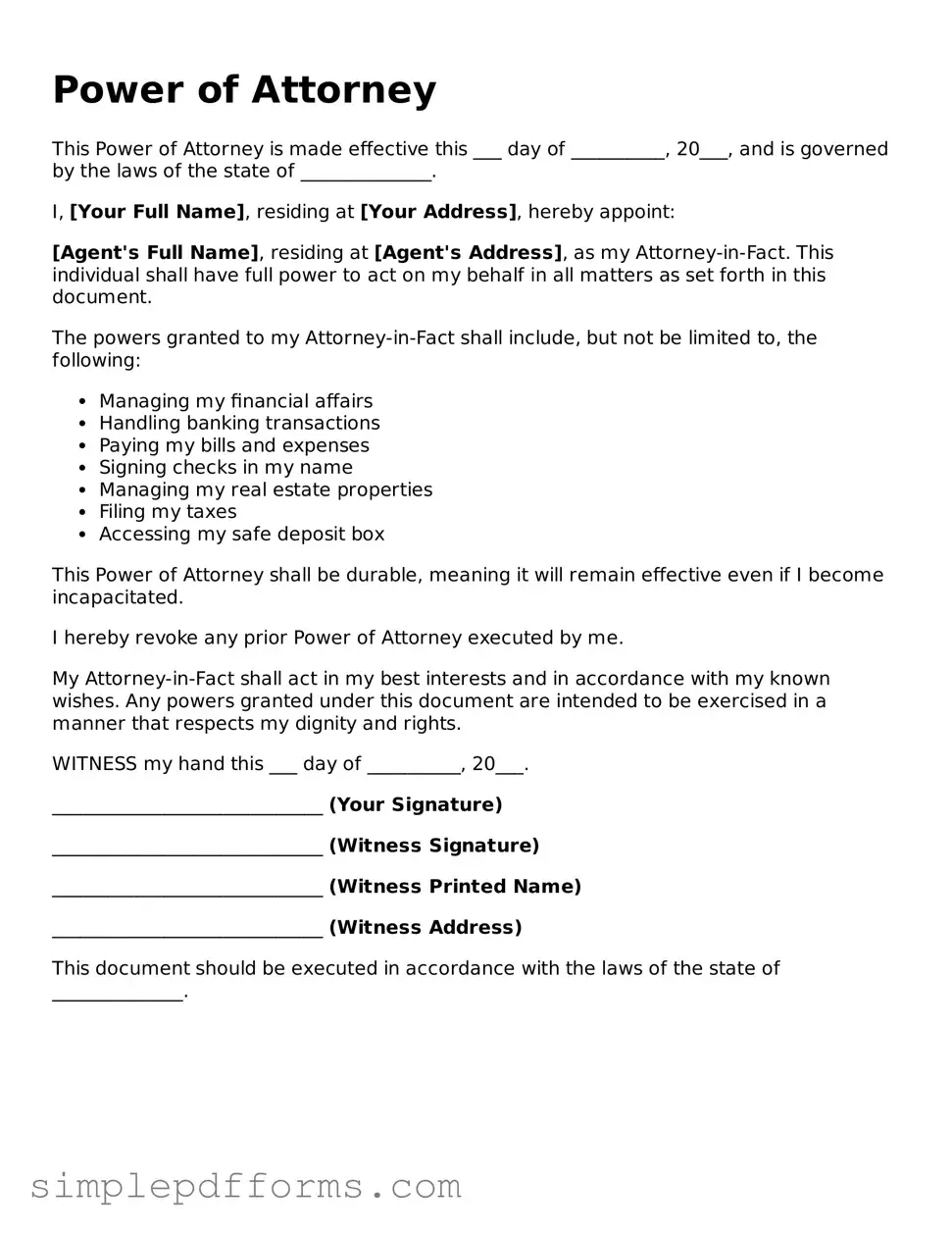Power of Attorney
This Power of Attorney is made effective this ___ day of __________, 20___, and is governed by the laws of the state of ______________.
I, [Your Full Name], residing at [Your Address], hereby appoint:
[Agent's Full Name], residing at [Agent's Address], as my Attorney-in-Fact. This individual shall have full power to act on my behalf in all matters as set forth in this document.
The powers granted to my Attorney-in-Fact shall include, but not be limited to, the following:
- Managing my financial affairs
- Handling banking transactions
- Paying my bills and expenses
- Signing checks in my name
- Managing my real estate properties
- Filing my taxes
- Accessing my safe deposit box
This Power of Attorney shall be durable, meaning it will remain effective even if I become incapacitated.
I hereby revoke any prior Power of Attorney executed by me.
My Attorney-in-Fact shall act in my best interests and in accordance with my known wishes. Any powers granted under this document are intended to be exercised in a manner that respects my dignity and rights.
WITNESS my hand this ___ day of __________, 20___.
_____________________________ (Your Signature)
_____________________________ (Witness Signature)
_____________________________ (Witness Printed Name)
_____________________________ (Witness Address)
This document should be executed in accordance with the laws of the state of ______________.
